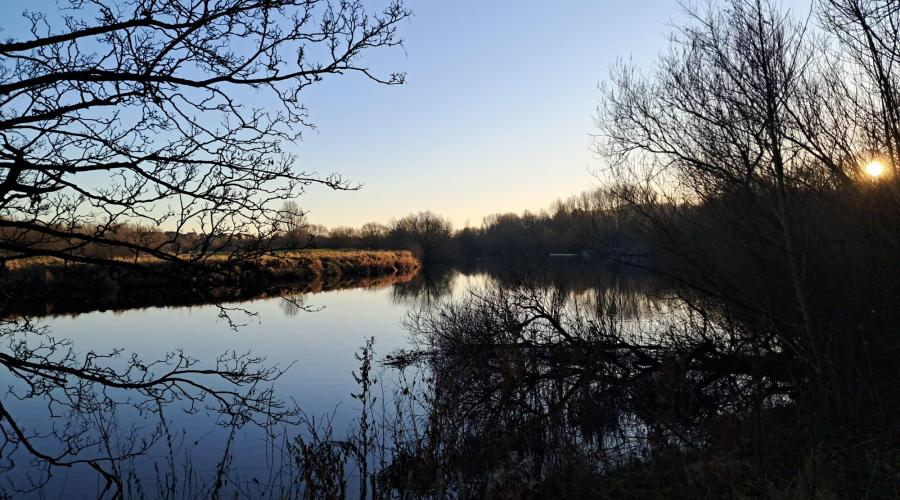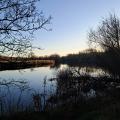Chichester: Walls, Ways, Wards and Watercourses
27 people attending
3 places left
One third townscape and two thirds landscape, but the townscape is that of Chichester, a cathedral city of Georgian townhouses, and the landscape is that of the rolling South Downs National Park. Walls: A complete but interrupted circuit of the Roman city walls with views over the historic centre. Ways: The West Sussex Literary Trail, the Monarch's Way and Centurion Way will be easy underfoot. Wards: The City of Chichester's, and the fair and fetching flint villages of East Lavant and West Dean. Watercourses: The River Lavant, a winterbourne, which we'll follow for much of its length. In addition to all this, the pub lunch and Christmas lights in the evening will give the walk a friendly, festive feel.
The sights:
Chichester: Medieval cathedral city of Roman origin (Noviomagus Reginorum), with many Georgian buildings and a thriving arts scene. The chief sights are: Bishop's Palace Gardens: extensive and intricate Tudor gardens overlooking the cathedral; City walls: Originally Roman, c 200 AD, four metres wide and five metres high in places. 80 per cent complete, making them the most intact circuit of Roman town defences in Southern England; Priory Park: Inside the city walls, the mound of a Norman motte and bailey castle; The Guildhall: The chapel of Greyfriars Priory, elegant 13th century; Chichester Cathedral: Fundamentally Norman, but modest and friendly in scale. 12th and 13th century rebuilds creating beautiful transitional Gothic chancel and retrochoir. Unique but ungainly detached bell tower of 1436. Tower and spire (82 m tall) accurately rebuilt in 1861 after collapse by George Gilbert Scott. Interior is almost a gallery of modern art (the cathedral exterior will be seen at a slight distance; we won't be entering); Chichester Festival Theatre: By Philip Powell and Hidalgo Moya, 1962, grade II*-listed. Innovative open stage and hexagonal plan. Park location to foster informality and festivity.
East Lavant: Beside the river with a lovely intricate yet relaxed plan. Brick, flint and thatched cottages and a superb view north to the Downs. St Mary's Church is 12th and 13th century, with a plain brick tower of 1671 and all the rest a Victorian restoration of 1863.
St Roche's Hill and the Trundle: 206 m in elevation. The Trundle (Old English 'Tryndel' or 'circle') is an Iron Age hill fort built around a Neolithic causewayed enclosure. Subsequent history involves a chapel to St Roche (lost), a Civil War encampment and a viewing area to Goodwood Racecourse.
West Dean: Secluded flint cottages along a lane alongside the River Lavant. Church of St Andrew, sensitively rebuilt in 1934 after a fire has 18th century Gothick tower and windows and Saxon proportions and door. West Dean Park, now an arts college is a feeble Gothick house of 1804 by James Wyatt totally of flint, including the window and door surrounds. Beefed up in Arts and Crafts style in 1893. Set in renowned gardens and parkland, Grade II*- listed, like the house (the house and park will be seen from the outside).
Flint: The main building material of this walk, along with brick. Made of silica and a form of quartz, it acquires a white rind on contact with chalk, so walls made with it are white to grey to black. Difficult to work but almost indestructible. Flint working is called knapping. When struck, flint fractures with glassy faces and sharp edges. The shards are then pressed into mortar for weatherproofing and decoration, a process called galleting.
The route:
The route is like a double transect from the Chichester Plain where the town is, up on to the chalk Downs and back again.
Before lunch: Leaving the station we will walk around the southwest, northwest and northeast quadrants of the city walls, mostly on the elevated walk promenade, occasionally at street level. We will then descend the walls and cross the Oaklands Way Ring Road to walk north along College Lane out to Summersdale suburb. Beyond that, the West Sussex Literary Trail running along Fordwater Road will take us out of the town into the countryside to East Lavant to begin ascending the Downs by way of Chalk Pit Lane with a great view at the top. If we have time, we'll briefly go on to the Trundle to enjoy the view. We'll then descend westwards on the Monarch's Way, cross fields and woods to go to West Dean for the pub lunch at just over halfway round at 13:30.
After lunch: Leaving West Dean, we'll follow a bridleway and the West Sussex Literary Trail alongside the River Lavant heading south. At the village of East Lavant we'll cross the A286 again at Mid-Lavant and use the Centurion Way mixed-use path to the north of Chichester. We'll leave it at Brandy Hole Lane. Back in Summersdale we'll cross the A286 again, walk a little way south along Lavant Road and walk through Oaklands Park past the Festival Theatre. It'll be getting dark at this point but we'll be under streetlights. After that we'll pick up the Walls Walk and complete our circuit along the northwest quadrant elevated promenade and the southeast quadrant along at street level. We'll be close to the city centre so you can at this point go home, go to the pub or go to the shops
(All images are from Google Image Search and are labelled 'Free to share and use'.)


What to bring
Wear walking boots with thick socks. Bring wet-weather gear if rain is forecast and cold weather gear if that is. Although much of the walk will be on tarmac and gravel, some of it will also be on dirt tracks which could be muddy after any prolonged rain, so wear walking boots rather than shoes.
Food & drink
Please bring drinks and snacks. We're booked in to have lunch at The Dean Inn in West Dean at about 13:30. We need to pre-order our meals, so I will contact you two weeks before the walk to ask what you would like to eat from the menu.
You're welcome to bring a packed lunch instead if you'd prefer which you can eat on a bench in the village. Please inform me of this so that I can notify the pub.
There are also abundant pubs and tea shops in Chichester at the end.